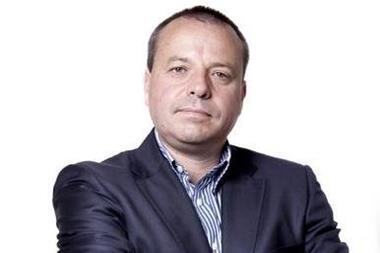M&A deals in the UK have changed fundamentally with bids now being rarely financed with debt and most interest likely to come from abroad
With several parties including Pamplona, and until recently Brit, fighting over Chaucer one could be forgiven for thinking that mergers and acquisitions (M&A) activity is in good shape in the insurance industry. But if you look closely, you will find that the giants of the M&A world have changed their bid structure.
Bids, whether on insurers or brokerages, are now rarely financed with debt or just cash. Brit for example offered Chaucer shareholders 0.23 new ordinary Brit shares for every Chaucer share with no cash element to the bid. Even Pamplona, whose ambition is to raise its stake from the 9.26% to 29.9%, is intent on making a partial cash offer.
This trend is likely to continue with brokers also looking to acquire, says Alex Alway, chief executive of Jelf. “I think the shape of deals will change where there will need to be more of an equity element of any deal going forward. I think the days of buying big- or medium-sized brokerages on purely debt are gone. Jelf has never been participant in that because it always raised its money on the stock market but anyone that thinks they can raise all the debt through the banks on the bigger deals are seriously deluded.”
Offers have changed in part because the financial crisis has had a major impact on the M&A landscape. There is a lack of readily available capital and getting access is difficult.
“Capital is available, but you have to have a fairly robust proposition to raise it,” says Clare Ryder, founder of management consultancy Salient Solutions.
Lack of capital is mainly responsible for slowing down the M&A train, but Ryder points out other reasons for M&A pessimism. “We need to see more stability. While some funding is available it’s expensive, so potential investors are put off. There needs to be a hardening of markets. While we have soft rates people will be cautious. It’s much harder to make revenue when market conditions have been like this for some time.”
Last year broker Jelf made a number of acquisitions including Argyll, a West Sussex and Kent-based broker, for £9.94m and Clarke Roxburgh, the commercial insurance, personal insurance, and independent financial adviser. But Alway says that this year he sees little value.
“The price of brokerages has fallen but has not reached a realistic level. So we are sitting on cash and waiting until we see the right value in the market,” he said. “It is unlikely we will be making acquisitions any time this year.”
But even if funding is obtainable few deals are successful. According to Adrian Williams, head of legal at QBE European Operations up to 75% of deals fall through at the due-diligence stage. He says failure is often because the process reveals something that does not meet the valuation assumptions, such as unsecured debt.
Due diligence may be a costly exercise, but not conducting it properly could lead to disaster. “Time and time again we see that M&A take place and the deal has not been done to a sufficient standard. Financial due diligence is one thing but commercial due diligence is another. Things don’t go to plan as there hasn’t been enough digging on how a business has been constructed, what it deals in, how its IT has been constructed, and what its relationships with carriers are. This lack of detail will come back to haunt the deal if not done properly,” says Ryder.
Not adequately tracking costs is another reason for M&A falling through. (See ‘Tracking benefits through collaborative technology’).
Alway admits that experience can be drawn upon but points out that every deal is different. “Anyone who says they are an expert is just kidding themselves. You have to be very selective and have the strength to walk away from deals.”
In the meantime more interest is likely to come from abroad. Australia’s insurance giant, QBE, is the latest company to reveal it has interest in Europe. Chief executive Frank O’Halloran said he is looking for deals to add up to A$750m (£360m) in premiums. But O’Halloran is intent on getting the timing right.
“We are working on opportunities and plan A is definitely within the year but we always stick to our criteria so it could take longer,” he says.
Tracking benefits through collaborative technology
Ben Scott Knight, director at business consulting and technology firm Concentra, outlines the importance of tracking costs following a M&A.
With any M&A, organisations have to take a long look at every aspect of their operations to derive the last penny of value.
Insurance companies are good at identifying what has to be done to cut costs and where the benefits need to come from; what they often lack is a robust process which will accurately track the savings generated over the entire period of the programme.
The insurance sector is not often noted for its innovative approach to IT (stories are told of firms with dozens of legacy systems, some dating back more than 10 years), but it can make all the difference when senior management is trying to understand how their cost-reduction programmes are performing.
In almost every financial services business, data is reported and analysed in a series of standalone spreadsheets or unconnected systems with no proper workflow and no consistency.
The board could find itself making major strategic decisions based on inaccurate financial data with no clear audit trail. And these cost-cutting programmes often run for years, with participants coming and going, so there is little consistency.
Not to mention that having to change results opens a can of worms with regard to corporate governance and compliance. No publicly listed insurance giant wants to go back to the market regularly and restate its profits because the board was given erroneous data on the success of its cost-cutting exercises.
Modern technology can solve these problems by removing the “spreadsheet slavery” that has characterised change programmes up until now. Instead, insurance providers can employ a single benefits-tracking tool, such as Qantif, to establish a consistent process across multiple cost-cutting programmes.
This allows teams to spend more time on generating benefits and less time tracking them. Research has found that effective benefits-tracking technology can cut 20% – 40% off the time used to manage the process.
So why does this matter? Research has revealed that roughly half of all M&A fail to deliver the business value they set out to achieve.
In a thriving market this is bad enough; with the economy in recession it can be fatal. The insurance sector is definitely feeling the pressure, with cost-cutting initiatives taking place left, right and centre. The last thing it needs is inaccurate data.






































No comments yet